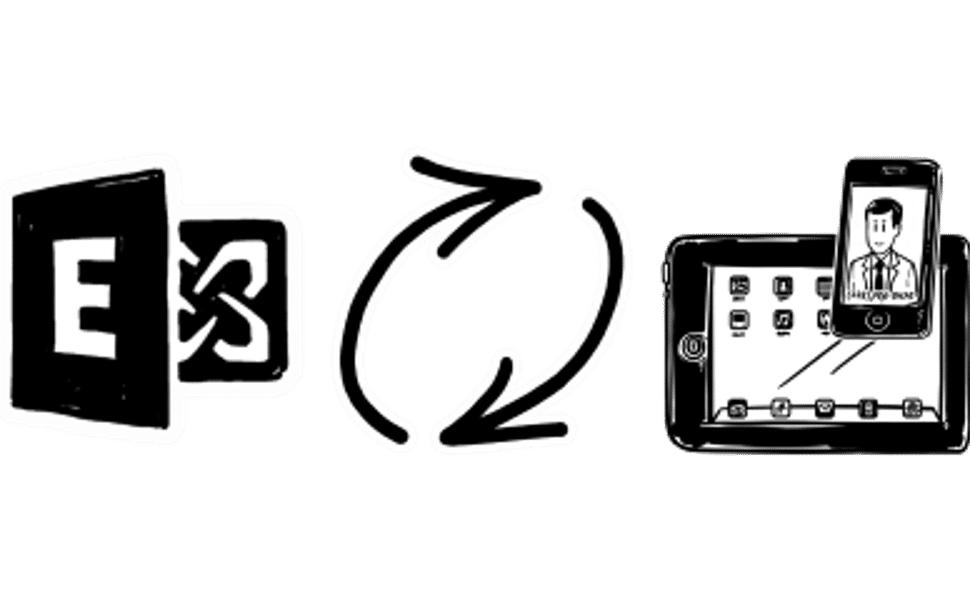Microsoft Outlook users store in Exchange Server’s contact folders addresses. This can be done in a personal mailbox, in a shared mailbox or in a Public Folder. While contacts from the personal mailbox will be often synchronized to the Apple iPhones and iPads and other targets by Microsoft ActiveSync, the contacts of other mailboxes and Public Folders are not accessible on mobile devices. PeopleSync is able to synchronize the contacts including email addresses, phone numbers and even the profile pictures from Exchange Server and Office 365 Exchange Online.
To bring contact data from Exchange Contact Folders and other data sources to your mobile devices from Apple and other vendors, PeopleSync is the perfect solution. PeopleSync and Apple iOS devices both support the standardized prootocols LDAP and CardDAV:
- The LDAP protocol allows an online search in the PeopleSync Directory. This protocol can be used to make the Exchange Contact Folder available without synchronization. The address books can be searched online, but Caller ID resolution won’t be available with LDAP on the iPhones.
- The CardDAV protocol is used for offline synchronization of PeopleSync Address Lists to the native iOS Adress Book application. The availability of the data in the iOS Adress Book is a requirement to resolve numbers of incoming calls or in your missed calls lists.
Both protocols can be published via your firewall for availability via 3G. Alternatively a company can decide to grant users access to PeopleSync via VPN or in the corporate WiFi network only.


